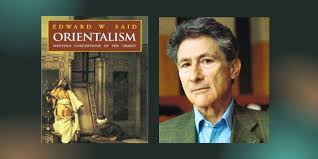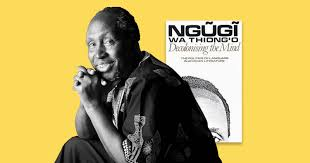Why "Midnight's Children" Rings True Thinking Activity
Write an analysis justifying Rushdie’s choice of the title"Midnight's Children."
Rushdie’s humour comes through in a 1985 interview in which he discusses how the concept of midnight children came to be. He claims he started with only one kid. As he considered switching them, they became two.
“Then I realised that in a nation like India, you can’t have only two children. It has to be more than two, and if it is, why these two? I used calculators to do a quantitative calculation on India’s birthrate and discovered that a thousand and one children is correct”.(“Les Fictions Du Réel Dans Le Monde Anglo-américain De 1960 À 1980”)
Let's see how the reference of the "Children of Midnight" is used in the novel.
"those secret, nocturnalcalk, like calling out to like... the unconscious beacons of the children of midnight, signalling nothing more than their existence, transmitting simply: 'I.' From far to the North, 'I.' And the South East West: 'I.' 'I.' 'And I.'
The quote talks about the special and mysterious qualities of the children born at midnight. They have a hidden part of their identity that is difficult to understand. These children have a strong connection to each other, like a group of people who share something in common. They are constantly trying to be heard and recognized, even though it's challenging. Their existence is a message to the world, saying "I am here." They are a diverse group of people, each with their own unique experiences.
"still the children of midnight deserve, now, after everything, to be left alone; perhaps to forget; but I hope (against hope) to remember..."They were, "children of midnight were more varied than I-even I-had dream."
The quote reflects on the experiences of the "children of midnight" and their need for peace and solitude after all they have endured. The quote also highlights the diversity of the children and their variedness, emphasizing their individuality.
It refers to the Saleem's feeling of being betrayed by their own identity or destiny. He often feels conflicted and burdened by these abilities and the weight of his nation's past. The line "take me to my fate" suggests that Saleem believes his actions, driven by his identity as a midnight's child, have led him to a predetermined outcome. This could imply a sense of being trapped or controlled by external forces, such as fate, history, or the magical powers he possesses. Jean-Paul Sartre said that "existence precedes essence" however in the case of Saleem the idea is contrdictory.
"the magical children of midnight, were hated feared destroyed by the Widow,"
By associating the Widow with the destruction of the magical children, Rushdie suggests that Indira Gandhi's policies and actions threatened the hopes and potential of India's future.
"Test-and hysterectomized, the children of midnight were denied the possibility of reproducing themselves..."
The quote talks about a terrible time in India's history when the government forced people to stop having children. This was done to control the population and stop people from speaking out against the government. Many people were forced to undergo sterilization procedures without their consent, which caused great suffering. The magical children, who represent the hopes of the future, were also affected by this policy. They were denied the right to have their own children, which is a basic human right. This shows how the government's actions were cruel and unfair.
Now let's jump on the phrase "Midnight's Children"
In Salman Rushdie's Midnight's Children, the term "Midnight's Child" is used in two distinct ways:

"It has a headline: midnight's child." the newspaper cutting is announcing the birth of a child who is symbolic of India's new beginning.
In the chapter "My Tenth Birthday" Saleem for the first time introduced the extraordinary abilities of these children. "Midnight's children can be made to represent many things, according to your point of view" This quote reflects the post-structuralist snd Deconstrctunist idea of no absolute truth and polyphony of meaning.
"that the purpose of Midnight's Children might be annihilation; that we would have no meaning until we were destroyed. " This could be seen as a reflection of the challenges and disillusionment faced by India's new generation, who were born into a nation struggling with the aftermath of colonialism, partition, and social unrest.
"Midnight's children: who may have been the embodiment of the hope of freedom, who may also have been freaks-who-ought-to-be-finished-off." The word "may" in the phrase suggests uncertainty and ambiguity. The use of "may" suggests that these different interpretations are not mutually exclusive but can coexist. It highlights the multifaceted nature of the characters and lingering nature or rather fleeting nature of identity.
"it is the privilege and the curse of midnight's children to be both masters and victims of their times, to forsake privacy and be sucked into the annihilating whirlpool of the multitudes, and to be unable to live or die in peace."
"Privilege and the curse": The phrase suggests a duality of experience. "Masters and victims of their times": The characters, as midnight's children, are both shaping and being shaped by the events around them. They have agency but are also subject to the forces of history. This line above emphasizes the characters' inability to maintain a private life. They are inevitably drawn into the larger social and political currents.The final phrase suggests a sense of existential turmoil. The characters' lives are marked by constant struggle and uncertainty, even in death.
Rushdie uses "Hinglish" to distinguish between characters of different social classes. Saleem, the educated narrator, speaks British English, while Padma, his less educated beloved, speaks "Hinglish." This linguistic difference highlights their contrasting personalities. Saleem's stubbornness is emphasized through his use of British English, while Padma's attempts to persuade him to eat and her expressive gestures reveal her frustration with his inflexibility. The "Hinglish" used by Padma indicates that she is not speaking fluent English, as evidenced by her use of "na" and grammatical errors. Additionally, her repetition of the word "starve" for emphasis is a common vernacular usage not typically found in standard English. Rushdie himself said,
"I found I had to punchate it (Midnight's Children ) in a very peculiar way,. . . I had to use dashes too much, keep exclaiming, putting in three dots,sometimes three dots fol!owed by semi-colons followed by threedashes.. .That sort of thing just seemed to help to dislocate the English and let other things into it. Desani does that all the time in Hatter.. . (1982)" What makes ideologies so difficult to dislodge is the conditioning since birth of the 'naturalness'of those.
Rushdie's de-doxification of the English language essentially means rewriting the existing reality while removing the reverence associated with it. This new truth is often seen in the narratives of religion, where one's own religion is proven superior by de-doxifying others. However, Rushdie, inspired by Mulk Raj Anand, did the same in his own unique way.
Analyze the depiction of the Emergency period (1975-77) in and the character of Prime Minister Mrs. Indira Gandhi.
Depiction of the Emergency
The novel depicts the Emergency as a time of widespread repression, censorship, and human rights abuses.
Character of Indira Gandhi
Indira Gandhi, who declared the Emergency, is portrayed as a power-hungry and ruthless leader.
Historical Context
It is important to note that Rushdie's depiction of the Emergency is not entirely objective. The novel is a work of fiction, and Rushdie's portrayal of the period is influenced by his own political views and experiences. However, his critique of the Emergency resonates with many historians and political commentators who have condemned the government's actions during this time. In the chapter Mr.Rushdie and Mrs.Gandhi Frank highlighted the the similar psychological upbringing of both however they are different.
However, Rushdie depicted her as "widow" which was controversial at the same time. Indira Gandhi was in the power and she misused it in every senses. Mira Nair's portrayal of Indira Gandhi was faithful to the book. The line "India is Indira, and Indira is India" captures the zest of the character of her.
This frame captures Indira sitiing and astrologer predicts her fortune about upcomig danger of the her stable power. In the background the frames of Nehru and Gandhi looking in the other directon of the where Indira sitting and the vertical flag altogether symbolizes the emergency.
"The vans and bulldozers came first, rumbling along the main road; they stopped opposite the ghetto of the magicians. A loudspeaker began to blare: 'Civic beautification programme… authorized operation of #Sanjay_Youth Central Committee… prepare instantly for evacuation to new site… this slum is a public eyesore, can no longer be tolerated… all persons will follow orders without dissent.'
Rushdie here clearly mentioned the name and the agenda of the goverment. This kind of demolition programme happens time and again and especially while any outside foreigns are coming to visit the India. However, this slums are somewhere thorn for the goverment because it reveles the true picture of the India in the words of Adiga, "Indian of Darkness" and even it was captured by Vikas Swarup in his work "Q&A". Nonthless the govermnet forgets that true India is that also and their existence should not be denied.
In the article “India’s Bulldozer Raj: Over 1,50,000 Homes Razed, 7,38,000 Left Homeless in Two Years.” Anuj Behal highlighs On June 19, in a massive eviction drive in Lucknow’s Akbarnagar, the State government demolished around 1,800 structures, including 1,169 houses and 101 commercial establishments. The BJP government plans to develop this area into the Kukrail Riverfront, transforming it into an ecotourism hub. Many residents have lived there for decades, with some claiming that they had been living there even before the development authority was formed. This is the recent example of the India how bulldozers are even working today for "Civic beautification". (Behal)
I would like to acknowledge the assistance of Gemini, an AI language model developed by OpenAI, for providing insightful suggestions and facilitating the organization and expression of original thoughts and concepts in the preparation of this work.
References :
Barad, Dilip. “Erasure and Oppression: The Bulldozer as a Tool of Authoritarianism in Midnight’s Children.” ResearchGate, Aug. 2024, https://doi.org/10.13140/RG.2.2.18505.15209.
---. “Postcolonial Voices: Analysing Midnight’s Children Through Theoretical Lenses.” ReserchGate, Aug. 2024, https://doi.org/10.13140/RG.2.2.16493.19689.
Behal, Anuj. “India’s Bulldozer Raj: Over 1,50,000 Homes Razed, 7,38,000 Left Homeless in Two Years.” Frontline, 24 Aug. 2024, frontline.thehindu.com/politics/demolition-eviction-drives-muslims-dalit-smart-city-lucknows-akbarnagar-housing-and-land-rights/article68331521.ece#:~:text=According%20to%20a%202024%20estimate,urban%20areas%20in%20the%20country.
DoE-MKBU. “Midnight’s Children | Mr. Rushdie and Mrs. Gandhi | Sem 3 Online Classes | 2021 07 14.” YouTube, 14 July 2021, www.youtube.com/watch?v=Mobzaun3ftI.
Ivison, Duncan. “Postcolonialism | History, Themes, Examples, and Facts.” Encyclopedia Britannica, 4 July 2024, www.britannica.com/topic/postcolonialism.
“Les Fictions Du Réel Dans Le Monde Anglo-américain De 1960 À 1980.” Presses universitaires François-Rabelais eBooks, 1988, https://doi.org/10.4000/books.pufr.3799.
Mambrol, Nasrullah. “Analysis of Salman Rushdie’s Novels.” Literary Theory and Criticism, 4 Apr. 2019, literariness.org/2019/04/04/analysis-of-salman-rushdies-novels.

















.png)
.png)
.png)
.png)
